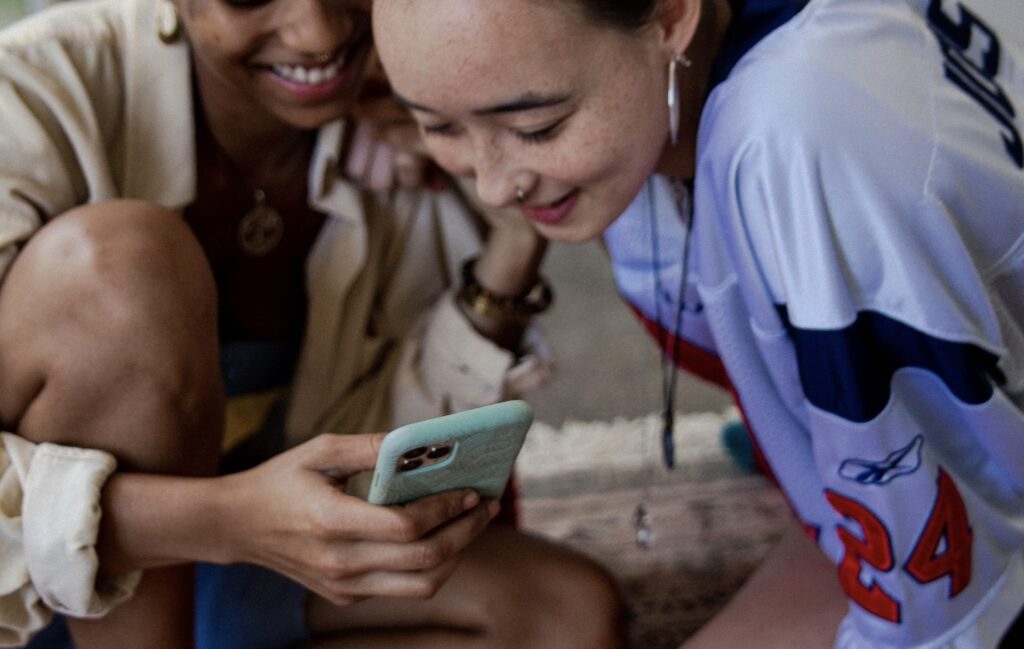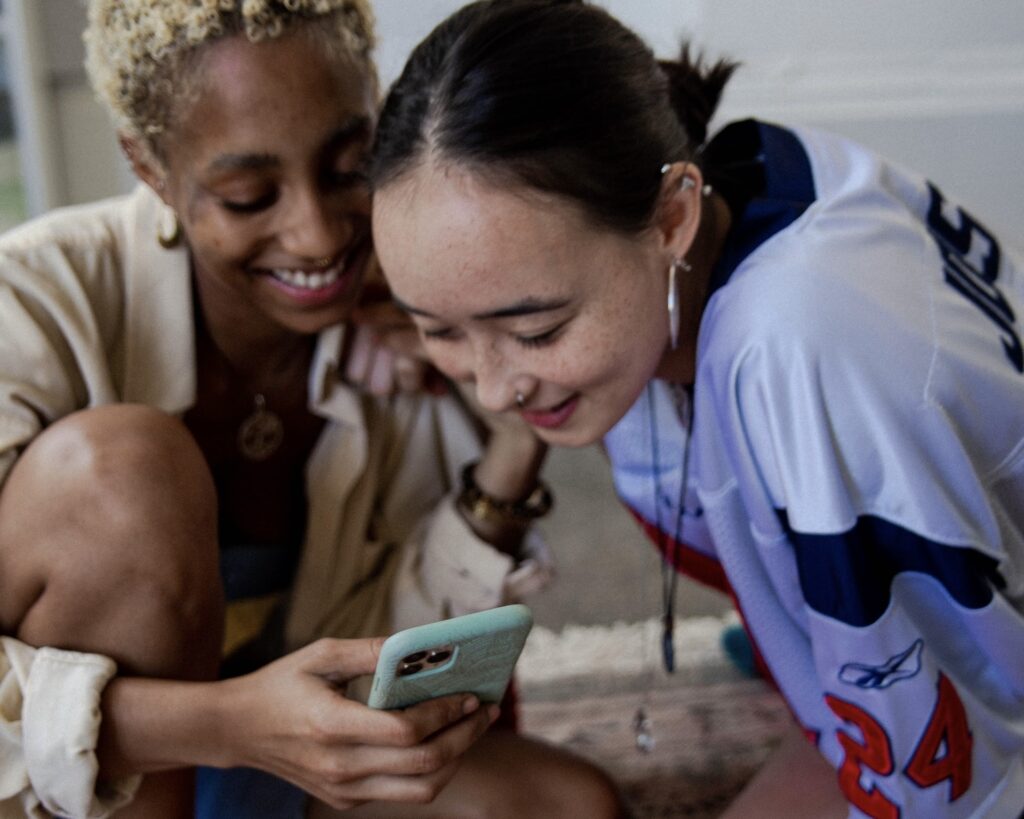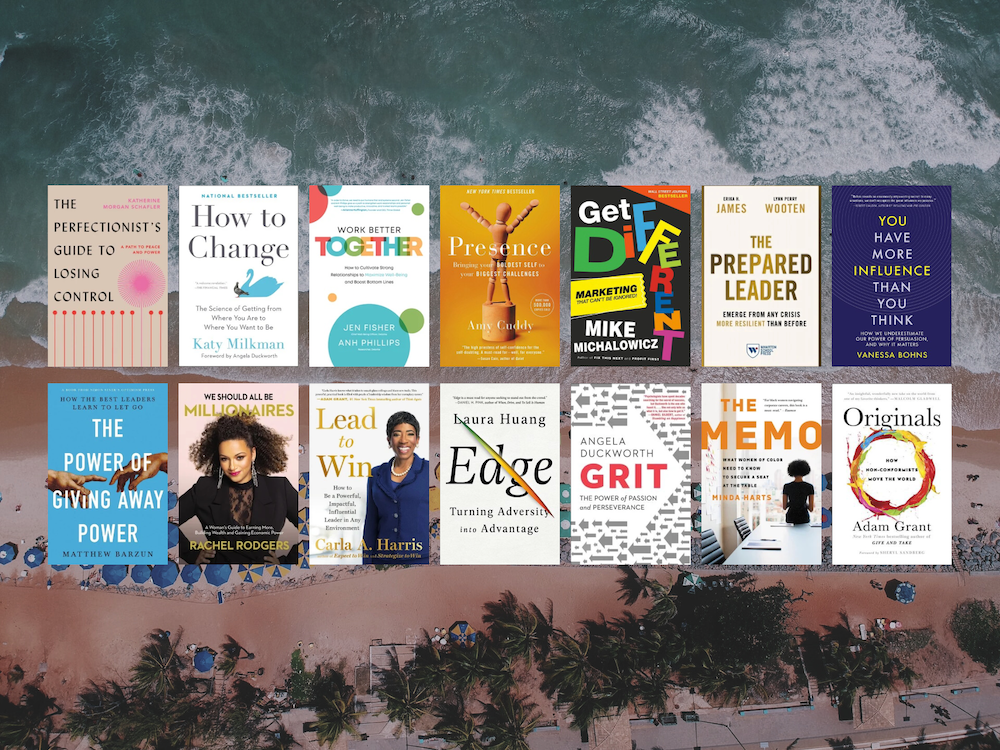How to achieve viral video success

Effective communication is the cornerstone of any successful person, or scalable business model. Without it, opportunities to connect are either missed entirely or lost in translation. Brands need to communicate to consumers, consultants need to communicate to clients, and entrepreneurs need to communicate to investors. The hard part is cutting through crowded content to stand out and get noticed.
On any given day, the average adult typically spends five and a half hours on their phone, checking it close to 100 times, or around once every ten minutes. That’s a lot of time, and one of the reasons people spend more time than they might intend to on their devices has a lot to do with the advertisements bombarding us on every platform imaginable.
“The average person encounters 6,000-10,000 ads in a single day, and our attention spans have perfected the art of tuning out,” says Marina Cooley, Emory’s Goizueta Business School Marketing Professor. To advertisers she recommends, “Becoming a compelling storyteller is your best chance to break through.”

But how does one go about that break through? Often, storytelling strength today revolves around the virality of the video content a company can churn out.
Classroom content creation
In her Content Marketing course, Cooley offers up powerful lessons on social media platforms, the science behind sticky ideas, storytelling techniques, and how to manage cult brands. Having taught this course in the past, Cooley tried different tactics. Selecting a failing company would allow her students to create a new content strategy but there wasn’t enough real world application. Recruiting start-up brands would enable her students to create a content strategy and content, but there wasn’t enough direct cause and effect.
The result? A pivot to a social media experiment that involved creating a class TikTok account, establishing 27 groups, and giving them a 27 day deadline to apply their teachings and try to create viral content. Leading TikTok brand creator, Bari Rosenstein, even led a classroom session on the “Anatomy of a TikTok” to help flatten the learning curve. It’s the foundation of traditional marketing techniques with a modern application that’s getting students excited, and engaged, and garnering really explosive results.
During the month-long experiment, multiple team videos reached their viral goals. With millions of views, hundreds of thousands of likes and comments, and more than 10,000 shares for the top three class videos alone, the students behind the success describe the learning experience as a surprising peek behind the social media curtain.
Why surprise elements explode online
“Day in the Life of an Emory Cat” resonated with business school attendees and animal lover TikTokers everywhere, resulting in over 762K views and counting.
As the owner of the video’s famous cat, Rebecca Brazaitis was surprised to learn just how much effort is required to make good, relatable content – and not just because the star of the show was her four-legged furball.
With elements of surprise like an animal attending Emory, and attention to details that made the video extremely rewatchable (like making himself a protein shake and facetime with his mom), the audience’s attraction to a lovable cuddly cat was nearly inevitable, but that doesn’t mean it was easy to make.
“Lots of behind-the-scenes things that you wouldn’t think of including setting up shots and writing the script,” Brazaitis says. “It was nice to have team members to help support. The filming process was super fun. Often, we would have an idea of how we wanted a shot to look but once we started to film, we would change it completely.”
While classroom lessons revolving around concocting sticky content provided a good baseline for students to go out and confidently execute their video expressions, the conclusion for many is the same one that brands content creation teams are currently having: do research, take creative risks, but sometimes expect the unexpected to become a top performer.
“They know their audience, know the trends, and try to use these insights when creating their branded content but sometimes it works and sometimes it doesn’t,” says Brazaitis. “I think brands, just like the students in Content Marketing, are still figuring out how virality works.”
One practice that helped her team dream up her cat Loki’s typical Emory day was being mindful of algorithm tricks (like how shorter content typically performs highest) and knowing what themes would ring authentic to their audience.
“When thinking of content ideas try and think, if I saw this on my For You Page would I like it?”
Relatable content can smash status quo standards
There is no “one size fits all” rule for virality, but consistency does prove to be a common thread. “I didn’t fully believe that and thought there was a lot more luck involved,” Cooley admits. “Having posted content for 27 days, I can now attest that, yes, consistency matters so much to the algorithm. The algorithm absolutely rewards consistent posting and content that is good enough to be shared. It’s built on virality.”
Still, well developed content that resonates with an audience on a grand scale can break all of the standard expectations we’ve come to associate with viral videos. Despite basically achieving documentary status by TikTok standards at two minutes and 30 seconds in length, viral break-through “Guessing Majors at College” received an impressive 30% watch through rate which Cooley attributes to the overall authenticity of the video as well as the knowledge gaps created for every single major.
“It also appeals to all college students because the students interviewed represented business school, computer science, pre-med, French, the arts, etc,” says Cooley.
Follow the trends, but make it fresh
Maintaining a good grasp on what’s trending is always a good idea when creating content, but trend following alone is not enough to guarantee success.
Margaret Chang, star of the 3.8M viral video “Worst Majors to Date” says her group was inspired by a trend that aligned with their brainstorming session: the dance mom’s pyramid ranking. She described the format as a perfect recipe for virality because of its bite-sized length, popularity at the time, and ability to be tailored to different subjects. While she says it was a fun change of pace to exercise her creative muscle in business school, the biggest surprise was opening her phone to see the video exploding online, especially since this was her first-ever crack at creating a TikTok.
“We did not expect to receive that much traction, so it felt a little overwhelming waking up the next day to find that our TikTok had blown up overnight,” Chang says. “Every time I refreshed the page, our views had gone up by thousands.”
For those hoping on a trend train, one element of stand-out videos that are more likely to experience high viewer interaction is focusing on personable content that encourages sharing and discussions in the comments section.
“Brands that can do this well are rare, but the ones that have a strong following are those that truly understand who their audience is and build a brand voice/persona that appeals to them,” says Chang. “Good content comes first, and then the marketing follows.”
Cooley attributes the huge success of this student video to the length of the skit and the watchability.
“It worked because it was under 30 seconds, had a knowledge gap of what is at the top of the pyramid and had so much clever text added at each reveal that you had to watch over and over,” reflects Cooley.

Viral videos in 2023 and beyond
With 15 years of professional marketing and brand building experience, Cooley says the best way to approach viral content creation in our current digital landscape is through authenticity. “Staged content just doesn’t work,” she says. Once a unique concept is developed, there are a few formatting suggestions that tend to trend. “A visually shocking first 5 seconds to pull them in, then creating a knowledge gap, which is a question the audience can only find the answer for by watching the full video, and a short enough video that requires the audience to watch multiple times to catch all the details,” Cooley points out.
One of the biggest themes of the Goizueta content marketing course is understanding that distribution platforms are constantly evolving, so rather than getting comfortable with one medium (like TikTok for example) successful marketing professionals need to be able to constantly adapt and learn new methods, platforms, and approaches to connect to their target audience.
Cooley says looking back on this experiment, she may have learned more than her students.
“TikTok has truly democratized the dissemination of content creation,” says Cooley. “The mechanics of virality remain unchanged and I teach material that is the science of sticky ideas and that has existed for far longer than TikTok so it’s a wonderful proof point that the science works and this is just a new platform.”

Photos from Shingi Rice, Professor Marina Cooley and Emory Goizueta







